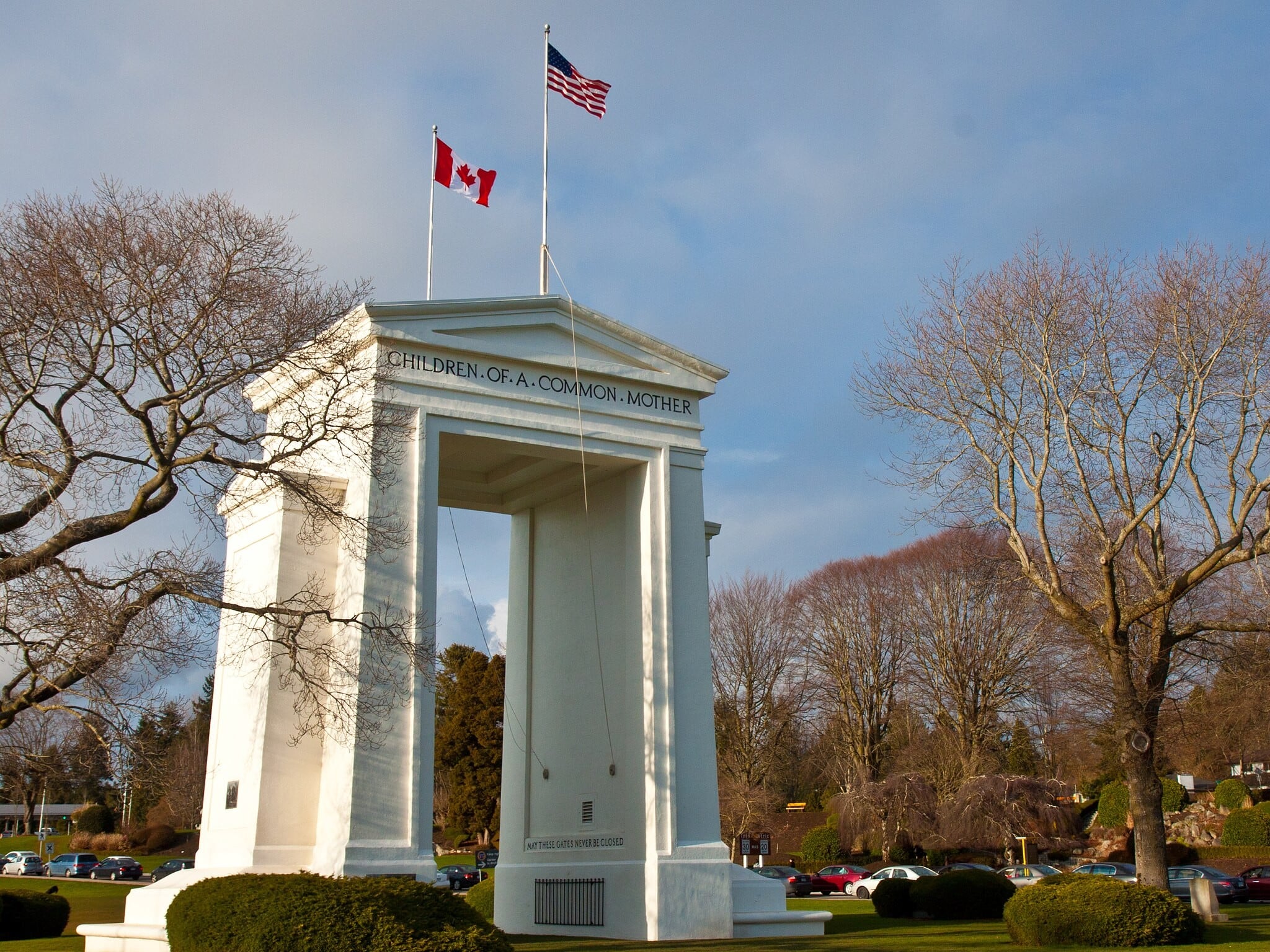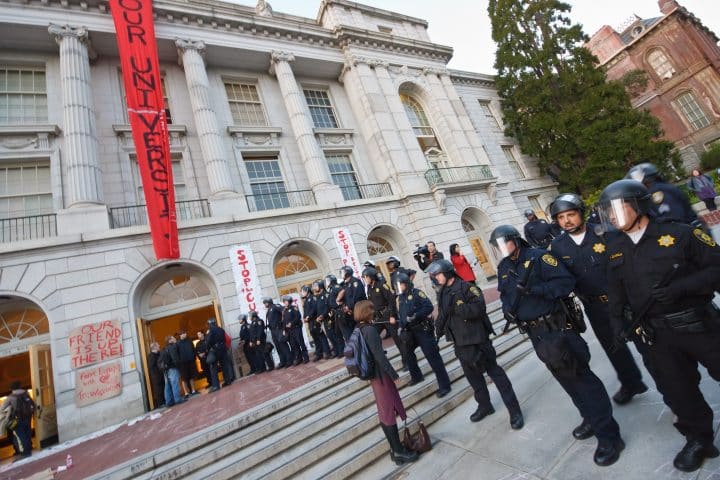You are a university student, on a study visa, in the middle of your midterm exams in the United States. You are sitting at your desk, finally getting started on that two-thousand-word essay due in a few days. You get an email notification: your visa has been revoked.
Faster than you could have ever expected, ICE is knocking at your door. You don’t answer. You contact your school’s administration to make sense of this outlandish mistake, but they’re of no help to you: this was no mistake. Your status as a student has been terminated, your visa rescinded, and as a consequence, your presence in the United States is now illegal. You are confused, you are afraid, you need to think fast.
Maybe this isn’t you, but it is hundreds of international students in the United States, having their student visas and green cards revoked, and facing forced deportation for incidents one would assume to be well within their rights– attending a pro-Palestine protest, for example, or merely sending a text suggesting their plans to march, to chant, to show up for people who are being silenced. None of which is illegal, I might add. The United States government and the institutions within it are using the threat of deportation and, in turn, the destruction of lives that international students and immigrants have built here, to keep those populations quiet, complacent. The worst part is, it’s working.
People have started to stay out of protests for fear their face might appear in the corner of a cover photo of a news article, exposing them to the police or anti-protesters who might leak their information. They are forced to silence their opinions on immigration laws or the funding of the U.S. military, praying that border security doesn’t check their phone or social media. A person was detained when trying to enter the country for “hateful speech” against the Trump administration.
My own cousin, a Mexican immigrant, even asked me to put up anti-conservative party posters for him around the city, wanting to voice his opinions and make change from the safety of social shadows, without sacrificing his future. And we don’t even live in the United States. This way of thinking has seeped through borders, spread by social media, political rhetoric, and shifting economic priorities. The international community is taking notes.
I grew up in Vancouver, Canada. We’re neighbours to the United States, close enough to knock on their door and borrow a cup of sugar. And that is exactly how I grew up, making trips across the border for metaphorical, neighborly cups of sugar: shopping trips to Trader Joe’s or concerts for artists who hadn’t yet made it in Canada. I even went to Disneyland once as a child. Not that I would be interested in going again, now that I am older and recognize the evil face of capitalism when I see it– even when it’s deceptively concealed by the novelty packaging of wonder, excitement, and memories of a lifetime. But that is a different essay.
Growing up where I did, I often felt lucky that I lived somewhere relatively comparable to this “dream country” we call the United States, without having to engage in their tax system or lack of accessible healthcare. I, as do most people around the world, have always known that the “American dream” is a façade, especially now that it is no longer 1950. And yet, with the reality of Trump’s second term in office, it’s impossible to deny the steep downfall of American democracy.
I have always said that Canada is like Uncle Sam’s little brother. Growing up alongside the United States, Canada looks toward the U.S. as an inspiration of what we might someday become. Not in all aspects, of course, but in terms of the general direction in which to take our country, Canada just loves to follow in the footsteps of its older and more experienced neighbour. For better and for worse. In recent years, attitudes towards transgender people, and transgender youth specifically, are a clear example, shifting dramatically towards a conservative perspective.
In the United States, countless states have enforced laws banning trans women from competing in sports (despite trans women making up 0.002% of college athletes); they have enacted laws preventing transgender children from being able to use their preferred names and pronouns; they have doubled down on bathroom sex segregation (barring trans people from using the bathroom of the gender they identify with).
Provinces in Canada are following suit, with Alberta and Saskatchewan notably pushing for the exact same laws. Moreover, the United States has cracked down on pro-Palestine protests, as mentioned earlier, revoking permanent resident status for people who have lived in the country for years, using antisemitism as a scapegoat, while letting fascism and neo-nazism proliferate through American society among the country’s most powerful.
Although Canada has yet to stoop quite so low, there have been detentions of activists for no other reason than the fact that they are speaking out against the Israeli government’s genocide on Palestinians. A staff member and alumnus of the University of British Columbia who was wearing a keffiyeh, a symbol of support for Palestine and significant Middle Eastern cultural garment, was detained and questioned for no apparent reason. Needless to say, Canada is following its older brother in many right-wing policies and perspectives.
While for so many years, following in the United States’ footsteps has been a successful strategy for Canada, with the second term of Trump’s presidency, the relationship between the two countries is breaking apart like an omelette torn mid-flip, revealing it was full of eggshells all along. Not only is the political landscape in Canada becoming far more conservative than it has been in years, but individuals are also picking up on this transitioning political position, adjusting their opinions on social issues accordingly.
Most people don’t want to be left behind in a changing political landscape, right? I’ve been noticing more and more people on social media, in public spaces, even on my university campus displaying support for Pierre Poilievre, leader of Canada’s Conservative Party, who in this year’s federal election is seemingly taking a lot of inspiration from the MAGA movement. His strategy to hype up Canadian right-wing voters seemed to be working until he needed to adjust his campaign in response to the import tariffs imposed by Trump. Yet despite this hiccup, Poilievre still has a wide fanbase across the country, unafraid to share their political opinions.
Rising in numbers among conservative voters are young people, eighteen to thirty-four; a population quite active on social media. In this new age of technology, social media has played a huge role in solidifying political ideologies through so-called echo chambers– defined by Oxford Dictionary as “an environment in which a person encounters only beliefs or opinions that coincide with their own, so that their existing views are reinforced, and alternative ideas are not considered.” This phenomenon is not a coincidence.
Platforms such as Instagram, TikTok, and X all benefit from amplifying political voices, and where better to get maximal engagement than on the pages of those who agree with a given political message?
Personally, my Instagram feed is full of left-wing content. Virtually all of my recommended posts are related to social activism in some form or another, and a few years ago I was naïve enough to believe that everyone’s feed looks like this. It wasn’t until a provincial election, before which I had seen only support for Canada’s New Democratic Party (NDP), when the Liberals won by a long shot, that I realized Instagram had kept me quiet by making me believe that everyone was surrounded by the same left-wing promotions I was seeing.
The issue is, by creating echo chambers in which no one is forced to confront political views different from their own (except in cases of rage bait), it further polarizes an already-divided community. People on the right don’t see that there are other options, and, in my opinion, this effect denies young and impressionable right-wing voters from important information that might change their vote, such as the environmental effects of oil pipelines and misinformation surrounding the housing and drug crises.
This phenomenon is not just based on the capitalistic structure of media platforms, either. By keeping young people separated, right-wing political parties use ignorance and fearmongering to convince the youth to swallow the proverbial red pill. According to a study by Media Matters America, the most popular and influential podcasts right now are by far more right-leaning than left. For instance, Trevor Noah’s What Now? with 21.2 million listeners, is greatly overshadowed by Joe Rogan’s The Joe Rogan Experience with 39.9 million. Because of the already-massive platforms creators like Rogan have, internet algorithms make it almost impossible for left-wing media to grow at a rate comparable to right-wing media.
Josh Citarella, an internet culture writer, makes a compelling observation of a further factor contributing to this reality. He argues that this issue is exacerbated by differing views on wealth distribution between the right and the left– billionaires funding right wing podcasters just aren’t on board with the left calling for more equitable distributions. They benefit from media figures advocating for keeping the rich safely within their tax bracket.
Media algorithms and politics only feed further into this chain of polarization. The more that right-wing content is pushed among young viewers, the more they close themselves off to other points of view. Worse, they villainize the left, painting them as infected with the “woke mind virus,” a term often used to describe people advocating for various human rights. This villainization, in turn, makes people on the left more argumentative as claims from the right get more outlandish. Given such realities, how can we, as the up-and-coming generation, work against the polarization pushed upon us, stay connected with one another, and continue to fight for what is right (or left, as the case may be)?
There is no one correct answer to this question. Clearly, community building is getting harder by the day. Organization isn’t going to happen without putting in the work. If you ask me, the most important thing short of becoming a politician yourself is to build community and try your best to make collective change. Ever heard the phrase “think globally, act locally”? It is exactly that that we need to do. Of course, don’t discredit the efficacy of petitions and social media shares because those are and will forever be important too.
But they’re not enough– to create lasting and impactful change, we must start at home. Although we as individuals may not be able to sway the opinions of our prime minister or parliament directly, we can advocate for social justice issues on a municipal level. Elected officials are there to listen to the people they represent. Through community organization, you can put pressure on your representative to argue for or against causes you care about. There is strength in numbers. Reach out to the community! Put up posters, hold rallies, write, talk about it. Talk about it! Do your research, make sure you get your facts right– talking about issues concerning your community is always important.
I was surprised to hear how many people my age didn’t know there had recently been a municipal election in Vancouver. Even the people who did know weren’t aware of all of the issues the city’s government would be addressing if elected. Being involved in your city, province, or state’s current issues is incredibly important when deciding who to vote for or which action to take. The power of knowledge and the power of community are two things we should never underestimate.
↓ Image Attributions
“Peace arch Canada-US border” by Abhinaba Basu // Licensed under CC BY 2.0




